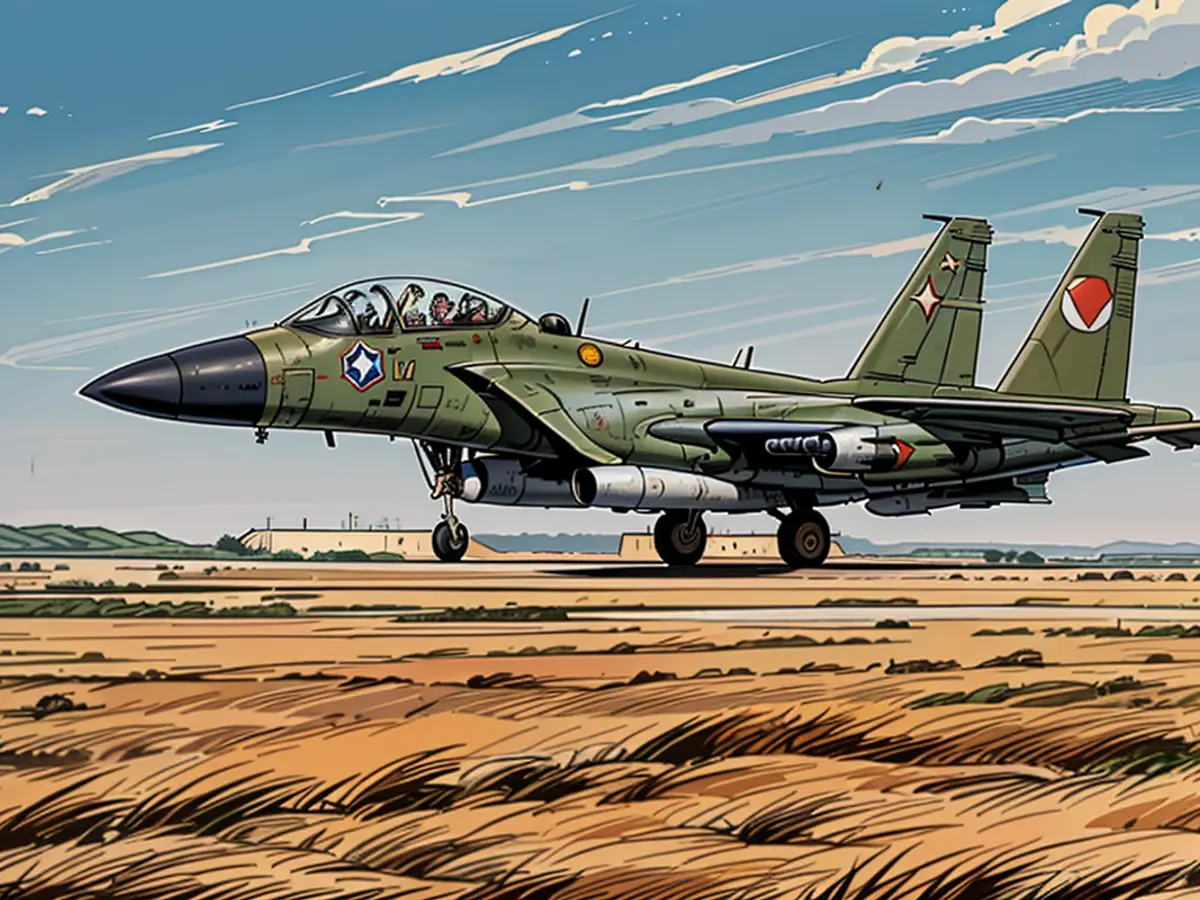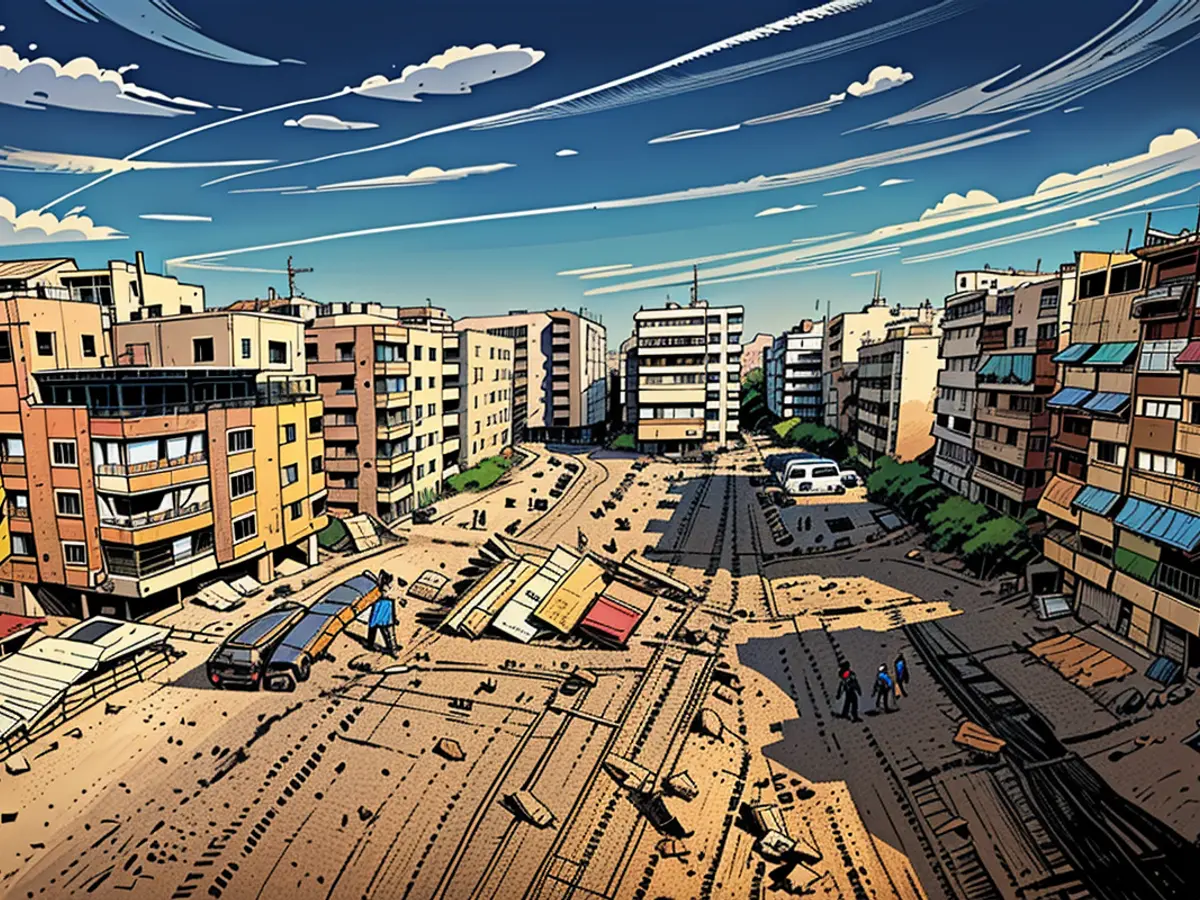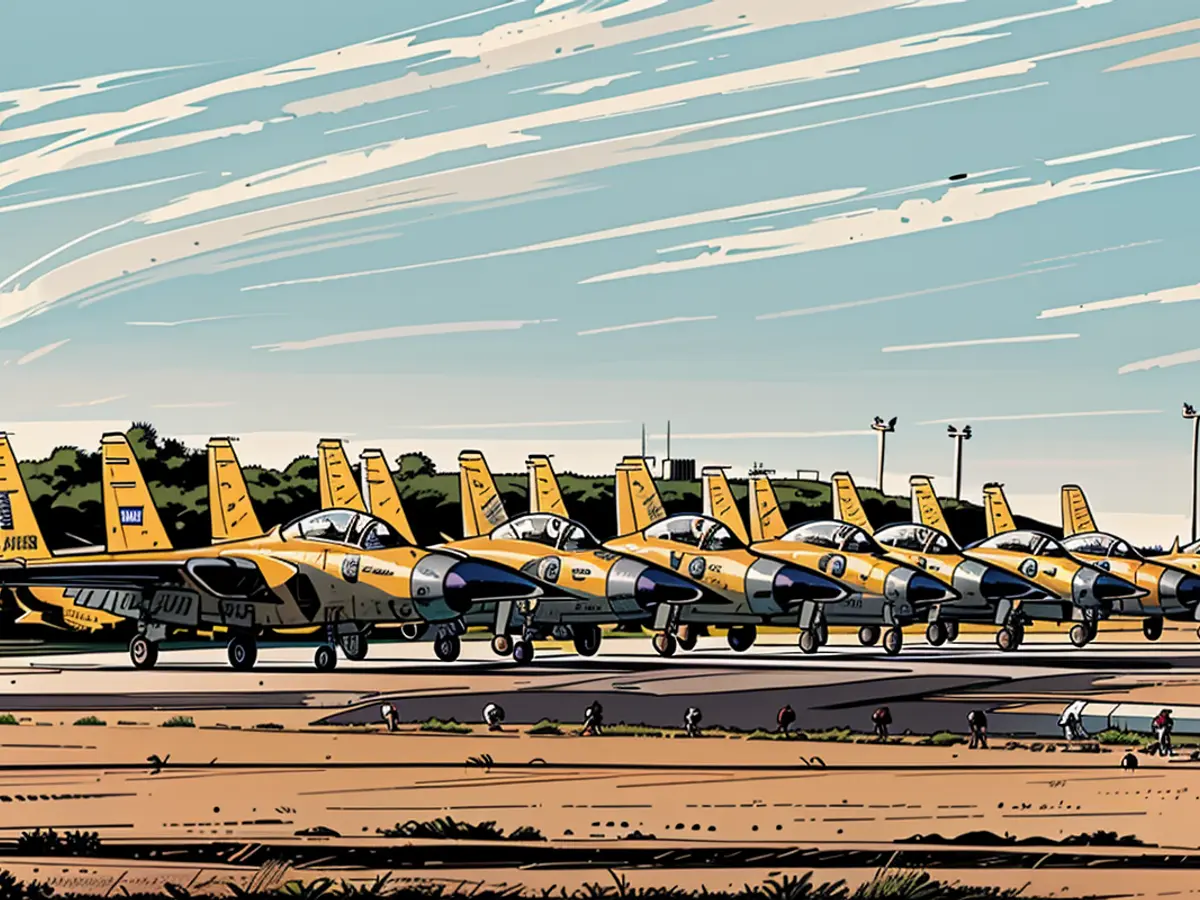U.S.-originated 2000-pound explosives potentialy deployed in assault leading to Hezbollah leader Nasrallah's demise, as per CNN's scrutiny.
A video released by the Israeli military on Saturday depicted jets allegedly involved in the assault carrying at least 15 2,000-pound explosives, including the United States-made BLU-109, as per Trevor Ball, a former senior explosive ordnance technician for the US Army who examined the footage for CNN.
These explosives, popularly referred to as "bunker busters," were outfitted with the United States-developed Joint Direct Attack Munition (JDAM) – a precision guidance system that transforms unguided bombs into "smart" munitions capable of pinpointing targets, according to Ball. He detected at least four BLU-109s with JDAM attachments on a plane featured in the video taking off.
Ball suggested that additional larger bombs might have been used during the operation, but only BLU-190s were visible in the footage. These munitions contain 535 pounds of explosives, significantly less than MK84s, another type of 2,000-pound bomb commonly employed by the Israeli military. "BLU-109s sacrifice explosive power to better penetrate targets than MK84s," Ball explained.
In a region that CNN geolocated to the scene of the attack in Beirut's southern suburbs, known as Dahiyeh, CNN discovered a massive, deep crater surrounded by debris from leveled buildings. A CNN analysis of video and satellite imagery concluded that four multistory apartment buildings were demolished by the assault.
Two senior Israeli defense officials informed the New York Times that 80 bombs were utilized during the strike on Nasrallah, while Ball told CNN that figure was plausible but based solely on the crater's evidence. "It's feasible there were extra craters filled by collapsed building debris and collapsed into them. It's also uncertain how deep and widespread any underground facilities were. That makes it extremely difficult to reliably estimate the number of munitions used," he remarked.
Justin Bronk, a senior research fellow for air power and technology at the Royal United Services Institute in London, who examined footage for CNN, concurred that the Israeli Air Force planes were carrying JDAM guidance kits, and that the crater was consistent with the impact of 2,000-pound BLU-109 bombs.
"Fits perfectly with the strike profile and the penetrating fuze settings and large warhead required to generate such a crater," Bronk said, adding that the combination of BLU-109 bomb and JDAM kit were "what you'd expect for striking a buried, hardened target like that."
The Israeli military did not release footage showing the moment the bombs were released but social media videos displayed large explosions in Dahiyeh, where the strike on Nasrallah's underground headquarters occurred on Friday. Bronk told CNN that the numerous smoke plumes seen in one video was consistent with several near-simultaneous impacts of 2,000-pound bombs, which have fuses set to detonate underground.

Bronk also mentioned, addressing reporters on Saturday, Israeli Brig. Gen. Amichai Levin, who commanded Hatzerim Airbase, said that "dozens of munitions struck the target within seconds with extraordinary precision," conforming to the demand for hitting such a deeply buried target.
The Israeli military has broadly utilized 2,000-pound bombs throughout its deadly campaign in Gaza, with weapons and warfare analysts attributing the high toll to their frequent usage.
The Israeli campaign in Gaza killed over 41,500 Palestinians and wounded over 96,000 others, as per figures from the Palestinian Ministry of Health. Israel initiated its ground offensive and aerial bombardment of the strip in response to a Hamas-led attack, which resulted in around 1,200 fatalities and captivity of 250 individuals on October 7th.
The use of 2,000-pound bombs, primarily manufactured in the United States, can cause significant collateral damage due to their significant destructive power. The weapon's lethal impact radius – an area of danger due to injury or fatalities surrounding the target – extends up to 365 meters (approx. 1,198 feet), or equal to approximately 58 soccer fields.
In May, the Biden administration confirmed that it had put a halt to a shipment of those bombs to Israel over concerns that they may be employed in the Rafah incursion and potential threat to civilians.
Israel's attacks in Lebanon persisted at a rapid pace throughout the weekend, resulting in over 100 fatalities and over 350 casualties in Lebanon on Sunday. The Israeli military reported that it was targeting Hezbollah, including fighter jets striking around 45 targets near a village in southern Lebanon.
At least 12 locations in Beirut were hit between Friday and early Monday morning, according to CNN's analysis. One attack demolished a floor in an apartment building adjacent to the city's Cola intersection, a primary central Beirut transportation hub, representing the first time a location within the capital's limits had been hit in nearly a year of conflict.

The assault on Nasrallah's underground headquarters in Beirut's southern suburbs, as reported by CNN, involved the use of 2,000-pound bombs, with Ball suggesting that not only BLU-109s but possibly other powerful munitions from the Middle East region might have been utilized in the operation.







